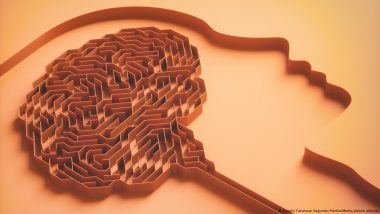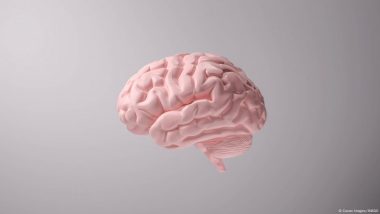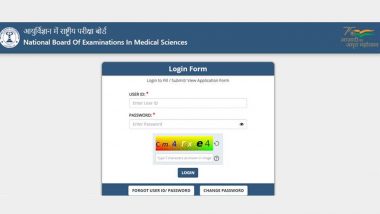A brain network involved in motivation and attention is larger in people with depression. The difference is also visible in people before they develop depression symptoms.Depression symptoms may come and go, but a new study has found that the condition changes internal communications in the brain, regardless of whether people feel depressed or not.
Also Read | What is a Supermoon?.
Using a brain imaging method called fMRI, researchers found that depression 'remaps' a major brain network involved in motivation and attention.
The changes in the brain network could be detected in people before they showed any symptoms of depression, meaning the researchers were able to predict who might develop depression and who probably wouldn't.
"The key finding is an expansion of the percentage of the cortex, which is occupied by a brain network called the salience network. This is novel because it was not recognized that clinical conditions like depression could expand brain networks before," said Jonathan Roiser, a neuroscientist and depression expert at University College London, UK, who was not involved in the study.
'Attention brain network' bigger in people with depression
The study, published in the journal Nature, analyzed brain activity in 141 people with and 37 people without depression. The aim was to find out how it changes the way regions in the brain communicate with one another.
"We often look at the brain in terms of how different regions talk to each other — a bit as if every region of our brain hops on a team phone call. The question is, which other regions it is talking to, and which network is it part of," said Miriam Klein-Flügge, a cognitive neuroscientist at University of Oxford, UK, who was not involved in the study.
They researchers found that a network called the 'frontostriatal salience network' was expanded in participants with depression compared with healthy controls.
This salience network is important for guiding attention and focusing on relevant stimuli entering the brain and regulating our emotional responses to them.
"It's an open question what this network actually does, but it is known to be important for mental health symptoms, including depression and anxiety," Roiser told DW in an interview.
Expanded 'salience network' predicts depression
The study found that evidence for salience network enlargement was so robust as an indicator that it could predict whether people would develop depression later in life.
They discovered the salience network was already enlarged in a group of children aged 10-12 years old who later developed depression in adolescence.
Klein-Flügge said the findings were "exciting and very rare." The authors achieved them by measuring brain activity in the test subjects for long durations when they were both well and unwell.
The study also found that the strength of the salience network was correlated with some symptoms of depression, especially those related to the loss of pleasure and motivation.
But it's not possible to infer from the data in this study whether changes in the salience network were linked to any particular psychological experiences or depressive thoughts, according to Emily Hird, another neuroscientist at University College London.
The study didn't compare brain activity to people's symptoms or thoughts — only the 'resting state' of their brains when they were in the scanner.
Instead, the salience network remapping can be viewed as "a kind of trait — a risk marker to help identify people vulnerable to developing depression in the future," Hird said.
Brain networks are 'remapped' in depression
But if the salience network expanded in people with depression, what does it expand into exactly?
Roiser explained that the network is remapped to include brain regions not normally involved in the salience network, including regions important in depression.
"They show the salience network intrudes into other brain regions, including one region we know plays a key role in deciding to exert effort," Roiser said. "That's very interesting because we know there's a reluctance for people with depression to engage in tasks requiring effort."
Roiser and Hird think their ongoing research indicates that the well-known antidepressant effects of exercise might be down to changing activity in this effort network.
"Exercise is pretty effective in depression, at least as effective as antidepressant drugs or psychotherapy," said Roiser.
Klein-Flügge was surprised the study did not discuss a brain region called the amygdala, which is important for processing emotions.
"This brain area has been at the core of depression research for decades. It might look like it is not important, but we know from prior work that it is very important in depression," she said.
A new 'biomarker' for depression?
Because the enlargement of the salience network was so stable and predictable in people with depression, Klein-Flügge suggested it could be used as a new potential ‘biomarker' for depression in the future.
A biomarker is a measurable way for physicians to detect a disease or disorder in patients — like an antigen test for COVID-19. In this case, the size or 'expansion' of the salience network measured in brain scans could potentially one day be a biomarker for depression.
"Whether this can reliably be used for predicting how likely an individual might be to develop depression will require larger sample sizes and a replication of this work," Klein-Flügge said.
But Roiser is more sceptical. He doesn't think scientists will ever find a biomarker for depression.
"I don't believe depression is a homogenous entity from a neurobiological perspective, so there won't be a single biomarker for it," he said.
Instead, Roiser thinks of depressive symptoms as manifestations of many different brain states.
"It's like how doctors used to think of dropsy, which was swelling of the legs. Now we know dropsy is not a disease, but a manifestation of many different diseases," he said.
Roiser thinks depression is similar: "Depressive symptoms probably arise from a complex interaction between different brain circuits that govern how we think, feel and behave — with different circuits driving symptoms in different individuals."
Edited by: Derrick Williams
Primary source:
Lynch et al. Frontostriatal salience network expansion in individuals in depression. Nature (2024). doi: 10.1038/s41586-024-07805-2
(The above story first appeared on LatestLY on Oct 17, 2024 04:40 PM IST. For more news and updates on politics, world, sports, entertainment and lifestyle, log on to our website latestly.com).












 Quickly
Quickly




















